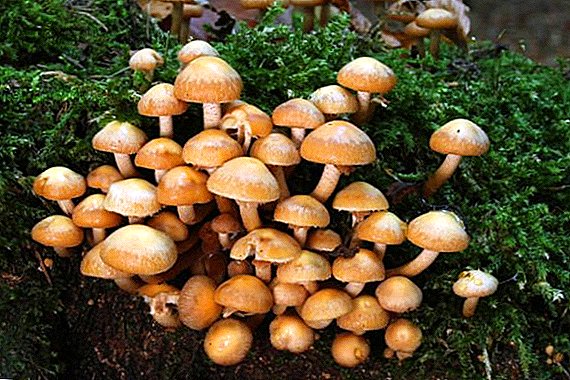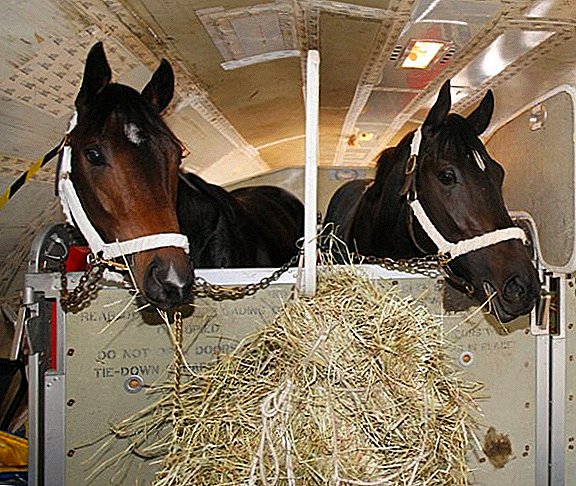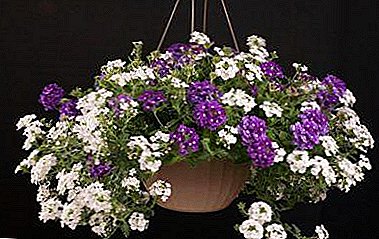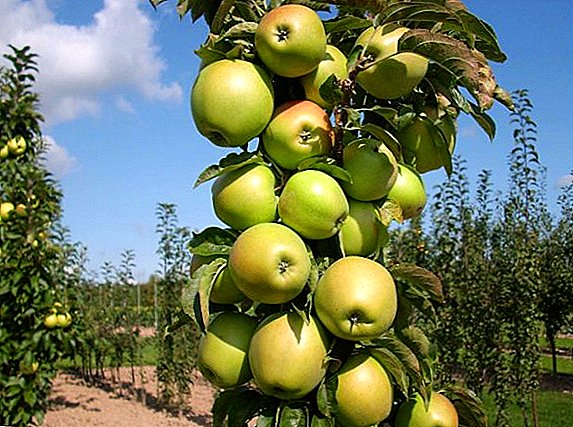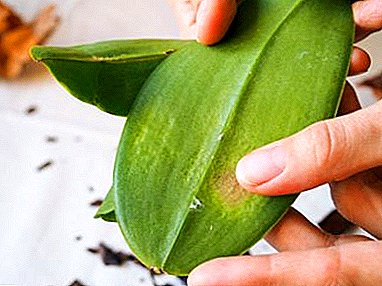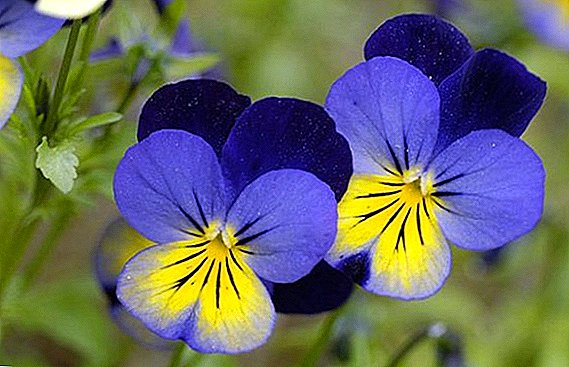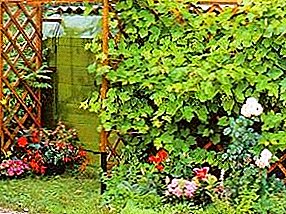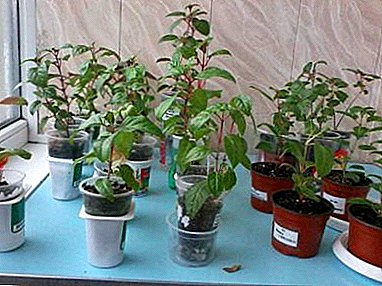
Fuchsia - a beautiful and spectacular plant that needs some care. But in order not only to grow a plant at home, but also to propagate it, you need to know how to propagate the flower correctly. The most common option - rooting cuttings.
Consider how to propagate fuchsia and grow beautiful, luxuriantly flowering plants at home. You can also watch a useful video on this topic.
Features rooting cuttings
Many flower lovers root fuchsia with cuttings - it is the easiest and most reliable.. In addition, the plants can be rooted at any time of the year, but the most optimal period is spring, when the seedlings have a lot of vitality. There are several ways:
- to prepare the ground and plant a cutting in it;
- put a young plant in the water, and wait for the roots to appear;
- apply vermiculite, perlite or moss to rooting.
Step-by-step instruction
The first step is to prepare the soil and containers for planting cuttings. The soil should be good to keep moisture, be loose and poor. In it the fuchsia will quickly take root, and they will develop well.
- Soil preparation and fertilizers. The soil is prepared as follows:
 peat - you need to take only horseback;
peat - you need to take only horseback;- to the total volume of peat, add 10% perlite and a little peat moss, which can be bought at the store;
- mix well.
- Preparation cups for rooting:
- It is desirable to take a transparent plastic cups of 100-200 grams;
- 2 holes in the bottom;
- put 1.5 cm of drainage on the bottom, this should be done so that there is no stagnation of water in the tank, as the plant does not tolerate overmoistening;
- pour the earth into cups and moisten well.
- Preparation of cuttings:
- the stalk should be cut with a sharp knife, it should be 2-3 internodes;
- then put the cutting on the pier and cut 45 degrees below the lower leaves, which are removed from the cutting;
- cut the second sheet plates in half;
- the upper leaves are pruned only if they are large, small, do not touch;
- the top of the cutting is cut in the same direction, removing the growth point so that the root system is formed faster.
- Landing. Before placing the cutting in the prepared containers with soil, they should be treated with root, or any available stimulant for root formation. Landing is as follows:
- In the ground to make a recess and install the cutting in it strictly vertically.
- Slightly press the ground so that the cutting is firm.
- We water the plant and cover with the package to arrange the greenhouse effect.
- Put the cups of seedlings in a cool place, so the roots will appear faster.
- Glasses should be in a bright place, but not on the sunny windowsill.
- Every day, open the bag for airing plants, just for a minute.
- Ventilation. There were roots - we begin to teach young fuchsia to fresh air, because if you suddenly remove the package, the plant can get sick or even die:
- open the package for 10 minutes for the first time;
- every day we increase this time by 5 minutes, until the plant becomes accustomed to the environment.
Once the greenhouse is removed, it remains only to wait for the first sprouts. But on this care for a young plant is not over, since the formation of a bush will follow the rooting.
You can multiply fuchsia at home and sheet. About this method of cultivation, we wrote here.
We recommend to watch the video about the proper cutting of fuchsia:
How to form a plant?
 The formation of a flower bush, produced by pinching the top point of growth. And the more fuchsias have shoots formed at the very beginning of growth, the more magnificent the plant will bloom.
The formation of a flower bush, produced by pinching the top point of growth. And the more fuchsias have shoots formed at the very beginning of growth, the more magnificent the plant will bloom.
This must be done if you want to have fluffy fuchsia on your windowsill, as some varieties do not branch, and they need help in this by pinching. It is worth remembering that during this process, the plant will not bloom, but in the end, you will get a lush, flowering bush on the windowsill.
In order for the plant to be properly formed, the removal of growth points from the shoots is carried out in three stages, and it takes about 2-3 months to complete the formation. The plant will bloom in the second month after the last pinching., but only if the light day at this time is large enough. If the cultivation of fuchsia occurred in the autumn, then you can set an artificial light and admire the flowering plant in the winter.
We recommend to watch the video about pinching fuchsia:
Aftercare
Fuchsia is a very unpretentious plant and therefore even a novice grower can grow it at home. The flower loves coolness, so in the summer it should be placed in a room where the air temperature does not exceed +20 degrees. The most optimal place is the east or north window sill.
The plant does not tolerate stuffiness, so if possible put a flower pot on the balcony, in a place where the sun's rays do not fall at all. Fuchsia feels good in the garden, in a shady place. The light for the flower should be diffused, if it is not possible to install a flower on the northern sill, provide him with artificial lighting.
Especially important for good growth after rooting - regular and timely watering filtered or settled water. In the summer time it will be good to spray the plant. In summer, it is possible to increase the humidity by placing the fuchsia flower pots in a pan with water.
Noticed that the leaves on the fuchsia filed, urgently water and spray. Then cover the plant with non-woven material, otherwise the elasticity of the leaves may not stop.
The rapid growth of fuchsia spring-autumn, at this time it is necessary to provide the plant with top dressing. Do not make organic fertilizers or mixtures with nitrogen - fuchsia will begin to increase the green mass and you can not wait for flowering. The best plant food is a mixture in which there is a lot of phosphorus and potassium, especially during the flowering period.
Important: Not many flower growers do not know, but a fuchsia flower, which does not like permutations from place to place, it gets used to a certain situation.
Possible diseases
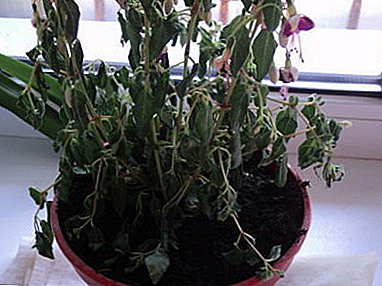 Root decay. Despite the fact that the plant is very moisture-loving, the stagnation of water and an overabundance can do much harm to it. A fungus or rot can appear and it is very difficult to save a flower in such a situation. If the leaves are sluggish and cease to shine, then most likely your beautiful woman is sick - cuttings from such a flower should not be taken, they will not give rooting.
Root decay. Despite the fact that the plant is very moisture-loving, the stagnation of water and an overabundance can do much harm to it. A fungus or rot can appear and it is very difficult to save a flower in such a situation. If the leaves are sluggish and cease to shine, then most likely your beautiful woman is sick - cuttings from such a flower should not be taken, they will not give rooting.- Blackleg - This disease affects mainly cuttings. Noticed this disease - remove them without pity, a good flower of them still does not work.
- Rust on the leaves - we remove the plant.
As soon as the diseased plant is thrown away, the soil should be treated with a weak solution of potassium permanganate or calcined in the oven for disinfection.
- What are the nuances of wintering in an apartment?
- How to competently transplant?
- How to do pruning?
Conclusion
Rooting cuttings fuchsia, simple and fun process. If everything is done correctly, starting from harvesting planting material and before the formation of a bush, then in 4 months you will receive a beautiful, magnificently blooming flower.


 peat - you need to take only horseback;
peat - you need to take only horseback; Root decay. Despite the fact that the plant is very moisture-loving, the stagnation of water and an overabundance can do much harm to it. A fungus or rot can appear and it is very difficult to save a flower in such a situation. If the leaves are sluggish and cease to shine, then most likely your beautiful woman is sick - cuttings from such a flower should not be taken, they will not give rooting.
Root decay. Despite the fact that the plant is very moisture-loving, the stagnation of water and an overabundance can do much harm to it. A fungus or rot can appear and it is very difficult to save a flower in such a situation. If the leaves are sluggish and cease to shine, then most likely your beautiful woman is sick - cuttings from such a flower should not be taken, they will not give rooting.